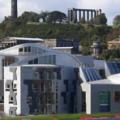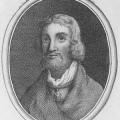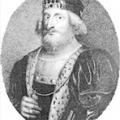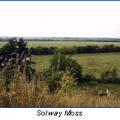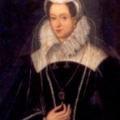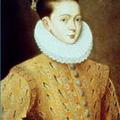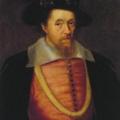Categories
Most Liked
Posted on July 17, 2013
by Amanda Moffet
by Amanda Moffet
Posted on May 12, 2013
by Chas Mac Donald
by Chas Mac Donald
Posted on August 29, 2013
by Amanda Moffet
by Amanda Moffet
Posted on February 6, 2013 by Donald | 2 views | comments
Robert Burns was born in Alloway, Ayrshire on 25 January 1759.
His father was a gardener and tenant farmer, and the life he was brought up in made him acutely aware of society’s unfairness as he laboured hard yet lived in poverty.
In 1786 he published 612 copies of Poems, Chiefly in the Scottish...
Posted on February 6, 2013 by Donald | 2 views | comments
Novelist and poet Sir Walter Scott was born in 1771 in Edinburgh, one of six surviving infants from twelve.
At eighteen months he took ill with poliomyelitis but pulled through although with a lame right leg. He was well educated, studying at Edinburgh University. In 1792 he was admitted to the F...
Posted on February 6, 2013 by Donald | 2 views | comments
The clan system regarded the land as belonging to their community, worked areas being passed down through the family while additional lands could be rented. As the generations passed, the clan chiefs became more wealthy and detached from their kinsmen, regarding them as their effects rather than t...
Posted on February 6, 2013 by Donald | 2 views | comments
Sorley MacLean (Scottish Gaelic: Somhairle MacGill-Eain, sometimes "MacGilleathain" in earlier publications) was born at Osgaig on the island of Raasay on 26 October 1911. At that time on Raasay, which lies between the Isle of Skye and the Scottsih Mainland, Gaelic was the first language.
His gra...
Posted on February 6, 2013 by Donald | 2 views | comments
Wednesday 13th March 1996 should have been a normal school day for the children of Dunblane Primary School. Tragically it was not.
On that morning unemployed former shopkeeper Thomas Hamilton walked unchallenged into the school armed with two 9mm Browning HP pistols and two Smith and Wesson .357 ...
Posted on February 6, 2013 by Donald | 2 views | comments
After the success of the Referendum in 1997 the First Minister Donald Dewar announced a competition for the design of Scotland's new parliament building. The winner was the design of Catalan architect, Enric Miralles.
His adventurous design with leaf shaped buildings and upturned boat style skyli...
Posted on February 6, 2013 by Donald | 2 views | comments
Scotland has a fantastic reputation as a tourist destination, the dark rolling mountains, the crystal clear lochs and misty glens. Every year thousands of visitors flock to Scotland from America, Japan, Europe and um err Outer Space!
But strangely our little green backpackers don’t pour up the A9...
Posted on February 7, 2013 by Donald | 2 views | comments
From a time that predates the great Scottish King Robert the Bruce or even the exploits of Scottish Hero William Wallace there lived a great king of Scotland, Alexander III. A ruler who reigned over a great time of peace and prosperity in Scotland but who's tragic death plunged the country into a gr...
Posted on February 7, 2013 by Donald | 2 views | comments
Máel Coluim mac Domnaill was king of Scots, becoming king when his cousin Causantín mac Áeda abdicated to become a monk. He was the son of Domnall mac Causantín.
In 945 Edmund of Wessex, having expelled Amlaíb Cuaran (Olaf Sihtricsson) from Northumbria, devastated Cumbria and blinded two sons of ...
Posted on February 7, 2013 by Donald | 2 views | comments
Domnall mac Causantín was King of the Picts or King of Alba in the late 9th century. He was the son of Causantín mac Cináeda.
Domnall became king on the death or deposition of Giric mac Dúngail, the date of which is not certainly known but usually placed in 889.
It is thought that he was killed ...
Posted on February 7, 2013 by Donald | 2 views | comments
Eochaid may have been king of the Picts from 878 to 885 or 889. He was a son of Run, King of Strathclyde, and his mother may have been a daughter of Cináed mac Ailpín. His kingship is usually portrayed as some form of joint rule with Giric.
However there is no consensus as to whether Eochaid was ...
Posted on February 7, 2013 by Donald | 2 views | comments
Causantín mac Cináeda (died 877) was a son of Cináed mac Ailpín. Although tradition makes Causantín a king of Scots, it is clear from the entries in the Chronicle of the Kings of Alba and the Annals of Ulster, that he was king of the Picts. He became king in 862 on the death of his uncle Domnall m...
Posted on February 7, 2013 by Donald | 2 views | comments
Mac Bethad mac Findláich, known in English as Macbeth was King of Scots (or of Alba) from 1040 until his death. He is best known as the subject of William Shakespeare's tragedy Macbeth and the many works it has inspired, although the play itself is of limited historical accuracy.
Posted on February 7, 2013 by Donald | 2 views | comments
David II, son of King Robert the Bruce by his second wife, Elizabeth de Burgh (d. 1327), was born at Dunfermline Palace, Fife. He was married on 17 July 1328 to Joan of the Tower, daughter of Edward II of England and Isabella of France.
.
David became king of Scotland upon the death of his father ...
Posted on February 6, 2013 by Donald | 1 views | comments
Kintyre and the Western Isles had been acknowledged as the property of the Norwegian crown in a treaty between Edgar, King of Scots and Magnus Barefoot, King of Norway, in 1098.
By the mid-12th century the Norwegians appeared uninterested in their Scottish lands, and by 1156 Somerled, descended from...
Posted on February 6, 2013 by Donald | 1 views | comments
With Edward I on the throne of England, John Balliol of Scotland and Philip IV of France drew up an offensive and defensive alliance which became a treaty in 1295. This was to have been endorsed with marriage between Balliol’s son Edward and Philip’s niece. The unnecessary disaster of Flodden in 151...
Posted on February 6, 2013 by Donald | 1 views | comments
In 1424, when James I returned from eighteen years imprisonment in England, he set about dealing with those who declined to aid his release from prison earlier and curbing the power of Scotland’s nobles.
His continual law-making added to the number of enemies he acquired for himself.
The Earl of At...
Posted on February 6, 2013 by Donald | 1 views | comments
Following the success against the English at Haddon Rig in the August, James V gathered an army of ten thousand and sent them, under the command of Oliver Sinclair of Pitcairns, to push as far into England as they could.
Their advance was met at Solway Moss by Sir Thomas Wharton and his three tho...
Posted on February 6, 2013 by Donald | 1 views | comments
Born on 8 December 1542, Mary’s life was complicated from the first week when her father, James V, died and made her Queen when she was six days old.
With James Hamilton, 2nd Earl of Arran, as Governor, Scotland was achieving closer ties with England. Queen Mary was betrothed, in 1543, to Edward,...
Posted on February 6, 2013 by Donald | 1 views | comments
In 1581, Esmé Stewart was created Earl of Lennox.
He was in support of Queen Mary and acknowledged Catholic concerns at a time when the Reformation was well established in Scotland. The Presbyterians believed Lennox to be an agent for the Counter-Reformation and a Catholic spy.
Although both the ...
Posted on February 6, 2013 by Donald | 1 views | comments
The son of Mary, Queen of Scots, and Lord Darnley became King of Scotland upon his mother’s forced abdication in 1567.
He was thirteen months old at his coronation and brought up by extremely manipulative individuals. He successfully stopped the draw of power away from his position by the Calvini...
Featured Articles
Most Discussed
Posted on July 16, 2013
by Amanda Moffet
by Amanda Moffet
Posted on February 6, 2013
by Donald
by Donald
Posted on July 17, 2013
by Amanda Moffet
by Amanda Moffet


 View More
View More View Less
View Less




